Canyon’s mid-travel bike has undergone a complete redesign for 2018, and the result is a bike that looks a lot less like the original Spectral, and a whole lot more like Canyon’s flagship DH bike, the Sender.
Making the new Spectral visually similar to the Sender DH bike was only part of the reason for the update though. While redesigning this trail machine, Canyon decided to inject a little of the Sender’s DNA into the frame too. With a pinch of DH and an added splash of development input from Joe Barnes and the Dudes Of Hazzard, the new 2018 Spectral promises to be a capable trail bike that’s equipped with 140mm of travel and chunky 2.6in wide tyres.
Pricing starts at £1,999 for a full alloy Spectral AL 5.0, and rises to £6,349 for the flagship Spectral CF9.0 LTD with a full carbon frame. Our review bike, the Spectral CF 8.0 sits in the middle of the range at £2,699 and features a carbon fibre front triangle mated to an alloy rear and built with an exceptionally good value complement of components.
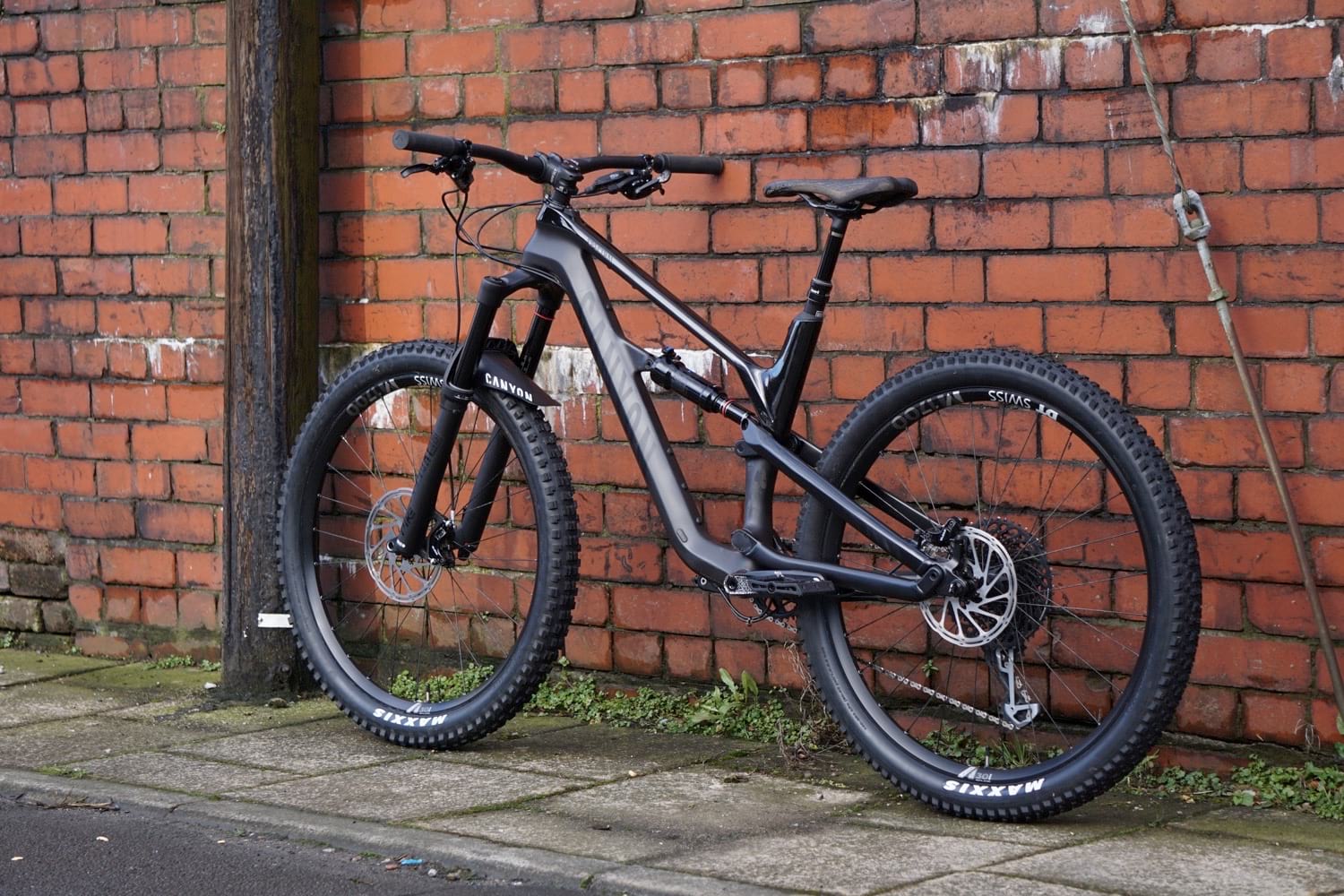
Before going any further I will mention that this review is for the unisex version of the Spectral. Canyon also offers a women’s specific version that looks very similar, but does feature real differences in the frame, geometry, suspension setup and build kit. If you’re interested in the review for the Women’s specific version, check out Amanda’s review here.
Latest Singletrack Merch
Buying and wearing our sustainable merch is another great way to support Singletrack
In addition to this, you may have already read Dean’s first ride review of the unisex Canyon Spectral, which outlines many of the design details and the general background behind the development of this bike. Since then, we received this Spectral CF 8.0 for a proper review on our local trails – an ideal opportunity to do some thorough testing away from the glitz and glamour of a finely tuned press launch.
Without further ado, let’s see how it did.
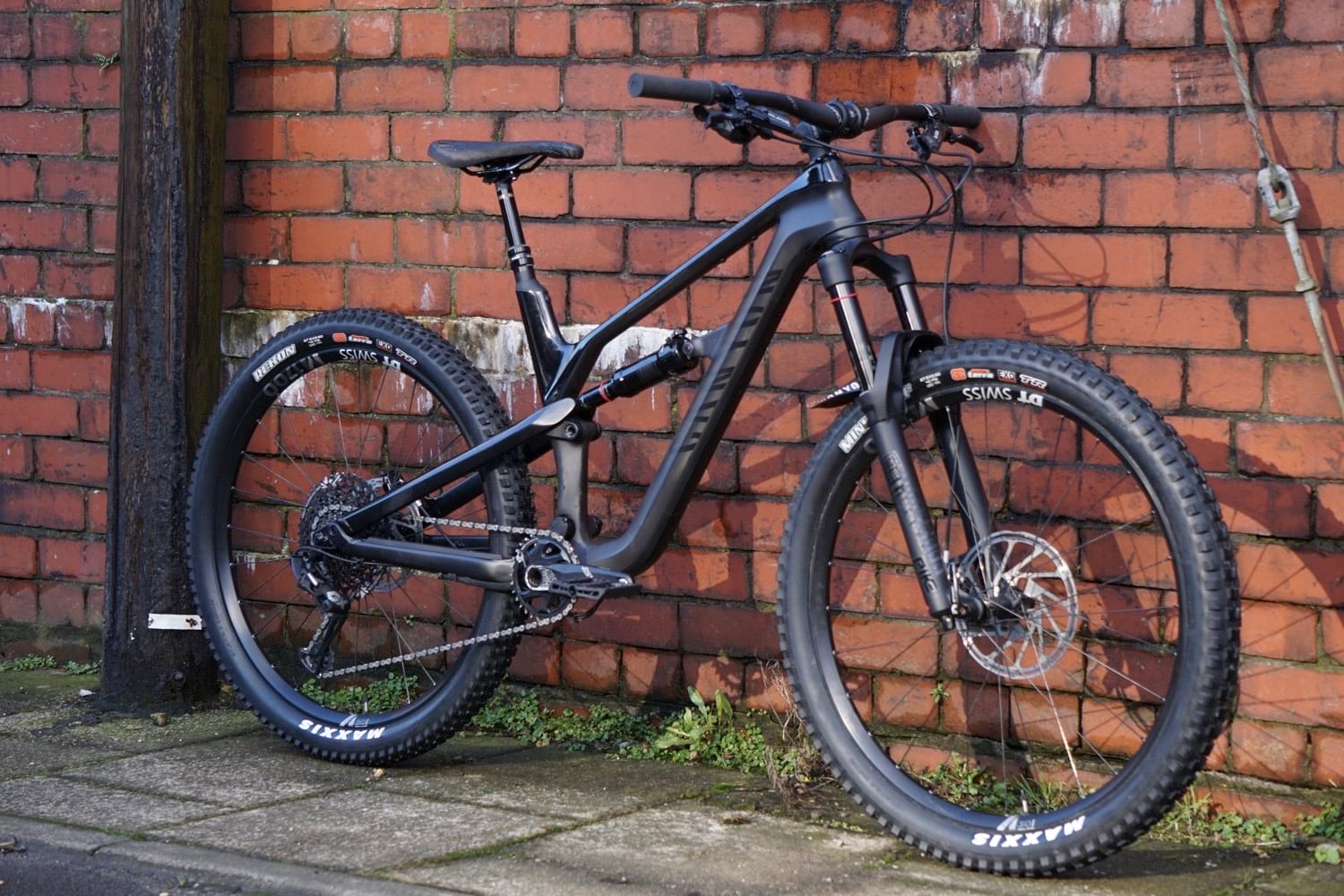
The Bike
While the Spectral CF 8.0 looks simple and understated in the two-tone black finish, the bike is surprisingly feature-rich. The fact that all these features are neatly tucked away and don’t look overtly flashy is a testament to Canyon’s design team.
At the front of the carbon monocoque frame you’ll see an hourglass head tube, which is topped with what looks like part of a BMX gyro. This is called the IPU (Impact Protection Unit), and funnily enough, its job is the complete opposite of a BMX gyro.
The IPU is made up of a group of components starting with a special headset top cap that clamps to the fork’s steerer tube. The top cap features little ‘horns’ on either side, and they sit level with a replaceable plastic bump stop that’s fixed to the top tube. As the name suggests, this bump-stop is designed to limit bar rotation so as to prevent the shifters and brake levers from crashing into the frame. If you do hit the bump stop really hard, the hollow breakaway bolts are designed to give way. So if you were to crash on a berm at the local bike park…*ahem*…then the IPU and bolts should take the brunt of the impact.
A nice bonus of minimising bar rotation is that your gear cables and hydraulic brake lines are less likely to be ripped out in the event of a crash.
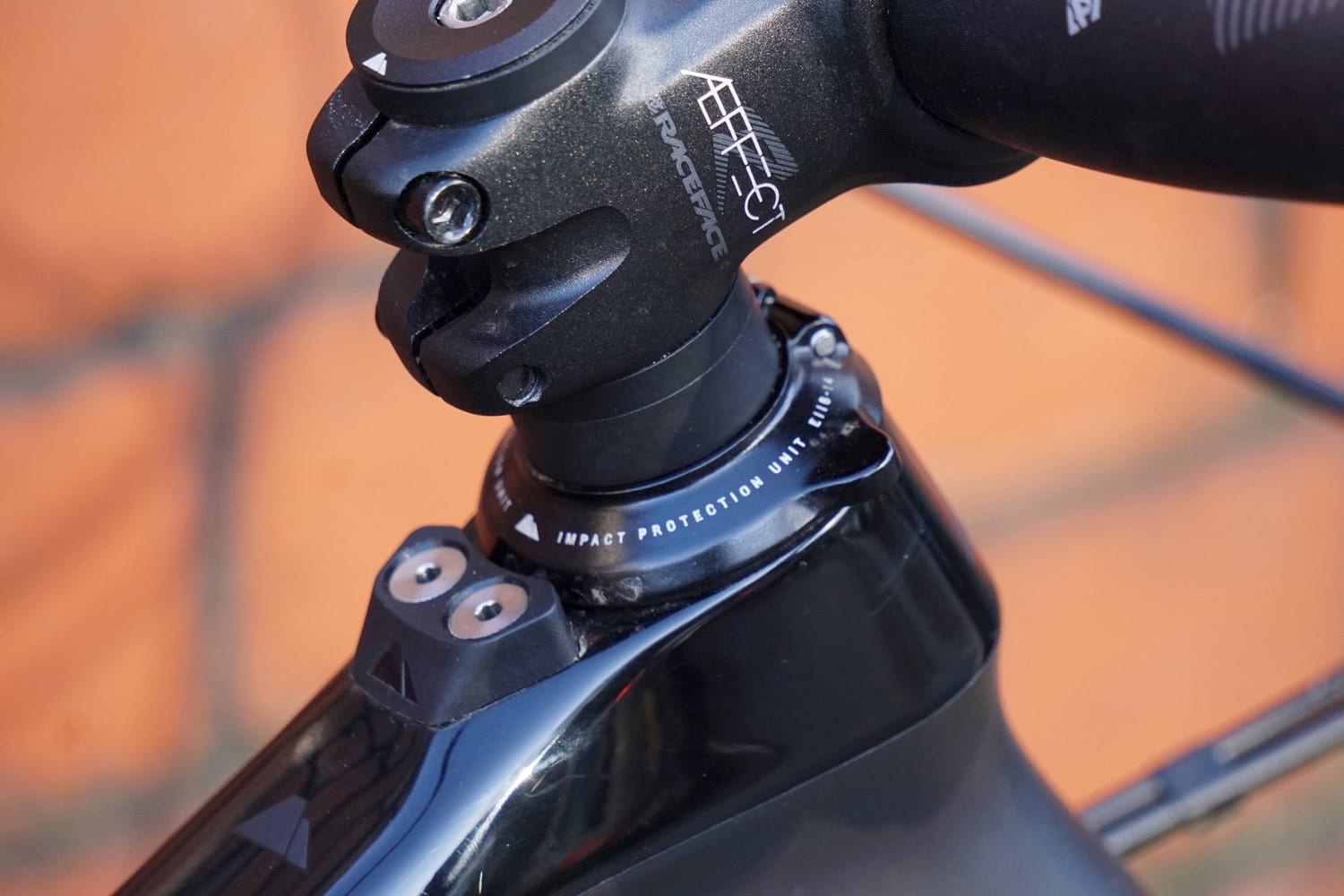
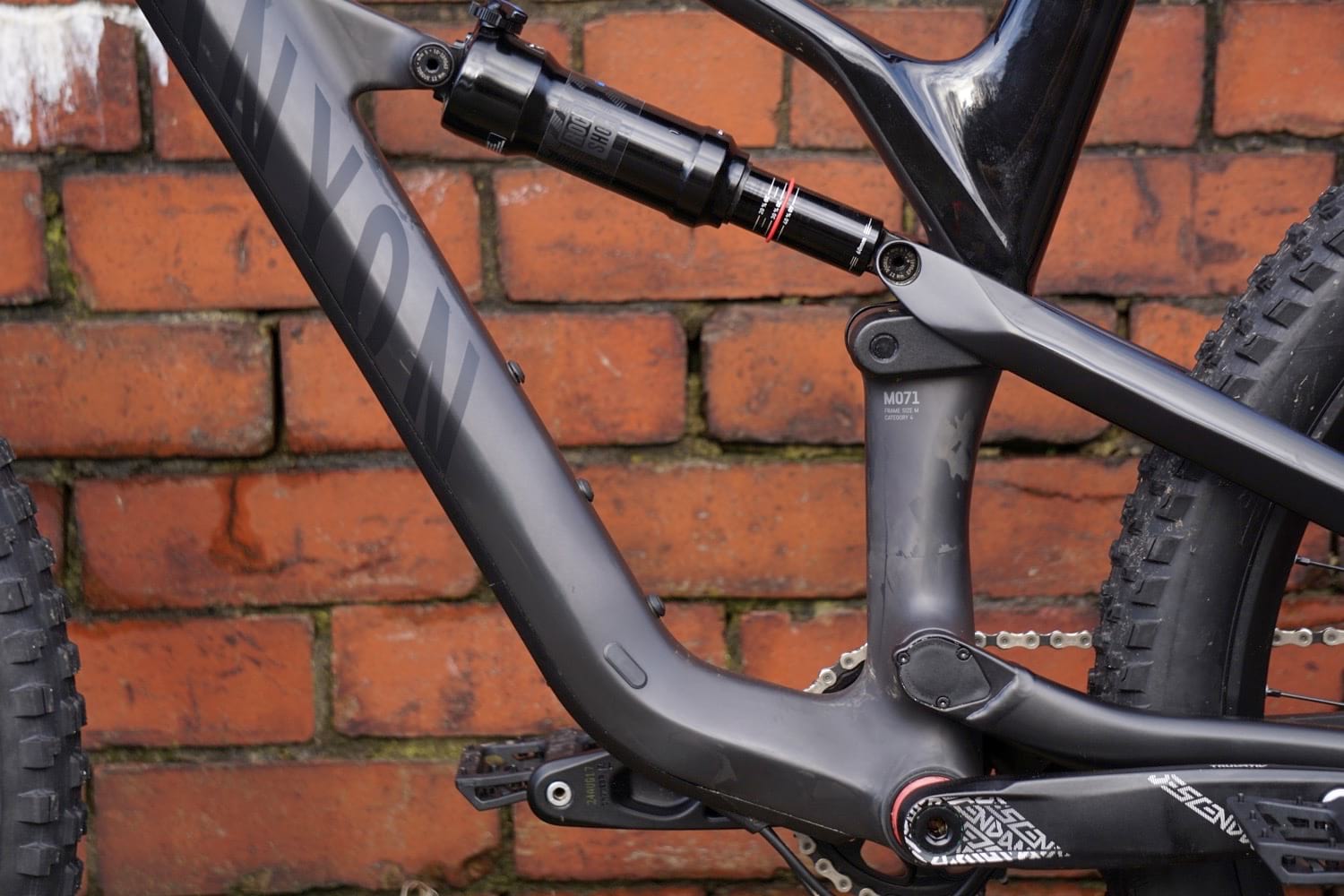
Speaking of cables and hoses, Canyon has introduced its integrated cable tunnel (Ed: ‘Chunnel’ perhaps?) on the Spectral. This feature combines the benefits of internal routing with the convenience of externally routed cables thanks to a removable bolt-on plastic cover. The cover also doubles as a protective bash guard for inevitable rock strikes or when you hang the Spectral out the back of a trailer on an uplift day.
Another neat integration is the seat post clamp. Rather than an external clamp, the Spectral has an internal clamp with a single hidden bolt for setting your seat post position. A rubber cap is fitted to keep water and debris out. Keep an eye on this rubber bung as I managed to lose mine at some point.
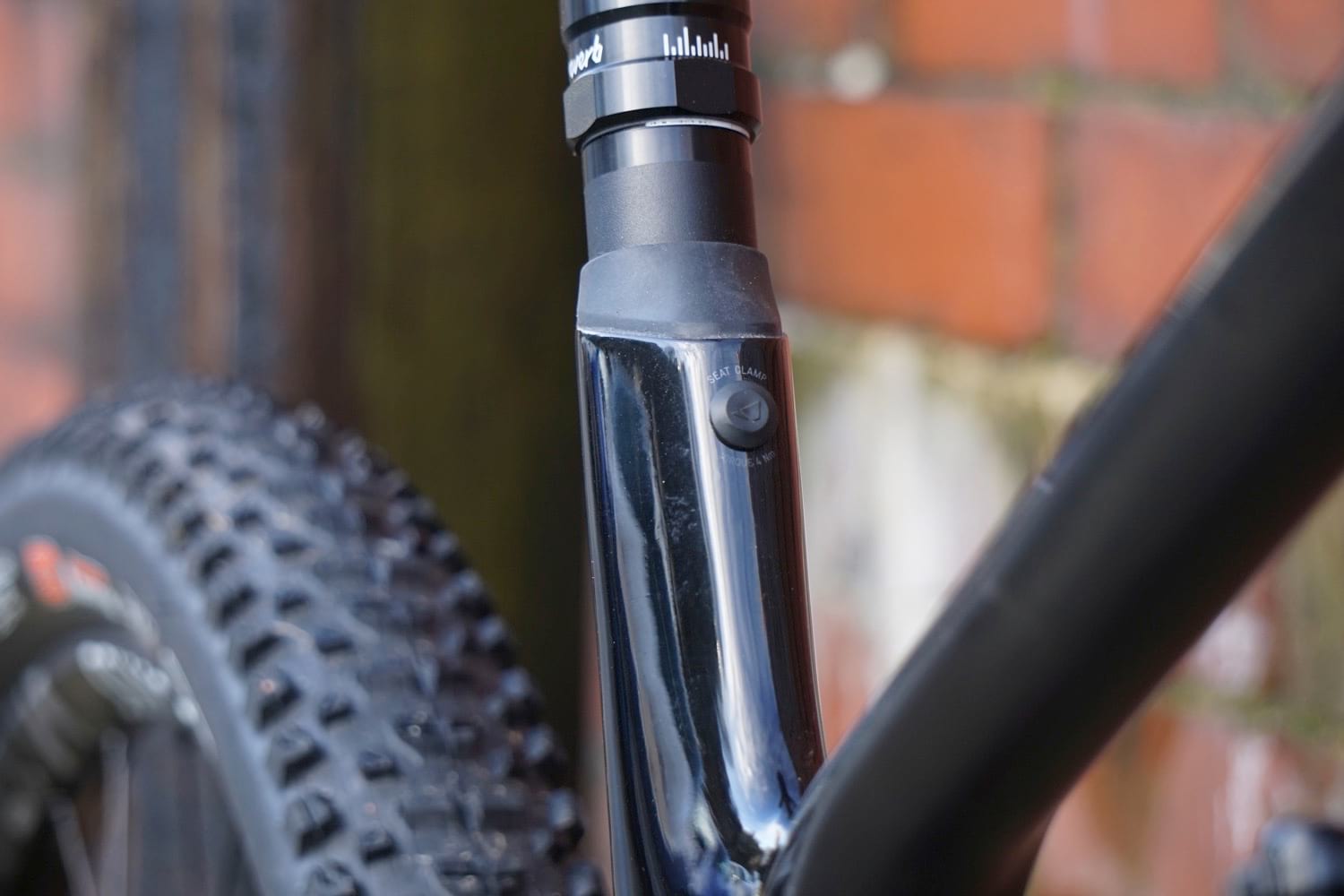
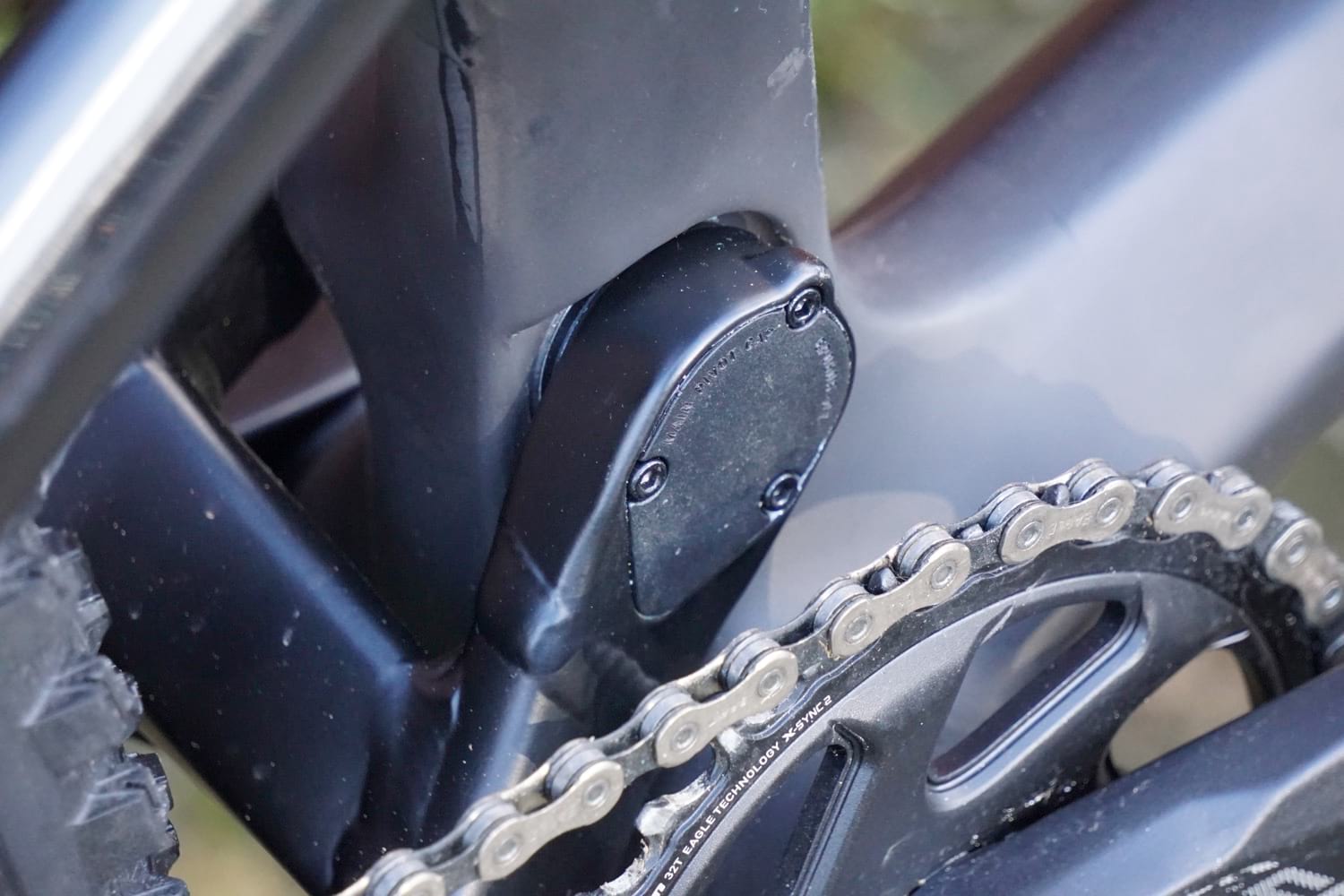
There are more rubber bungs dotted around the frame elsewhere, including three that are tucked up at the top tube and downtube junction. Here you can mount Canyon’s own frame case, which is big enough for a tube and a multitool, while further down there’s plenty of room for a water bottle.
Moving further down, you’ll notice that the Spectral isn’t a 1x only frame design. In fact, Canyon will sell you a Shimano equipped Spectral with a 2×11 drivetrain if that’s your bag. The front mech bolts to the lower linkage via an E-type mount, though when not in use, a neat plastic cover sits in place to shield the main pivot bearing.
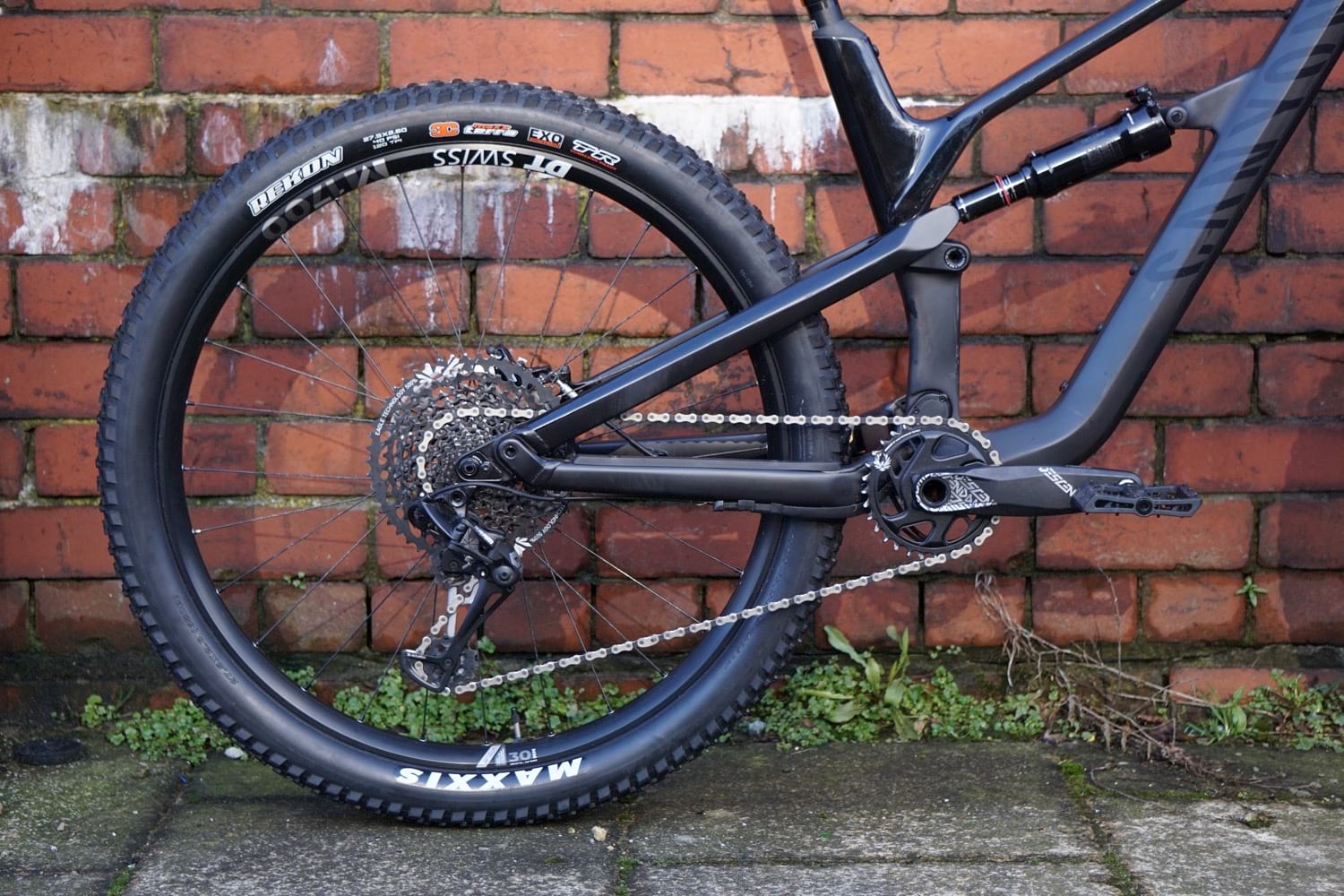
The suspension system on the 2018 Spectral is all-new too. The shock now sits horizontally in the frame rather than vertically, and there’s a new linkage that delivers what Canyon is calling its ‘Triple Phase’ suspension system. Amanda’s already done a great job of summarising what that is, so here’s her breakdown of what’s going on during each phase of the Spectral’s 140mm of travel;
- Starting stroke: At the start of the travel the suspension is designed to be supple for good traction, comfort and small-bump sensitivity
- Mid-stroke: Past the sag point, the suspension is tuned to be nice and stable to prevent momentum loss and to avoid mushiness under pedalling
- End-stroke: For the last third of the travel, the suspension progressively ramps up to give the suspension a bottomless feel, and to avoid you bottoming out the shock on bigger hits.

Some manufacturers might spec a high-end frame, and then downgrade components to keep a complete build under budget, but I don’t see any obvious areas where Canyon has cut any corners here. It all looks like stonking value for money to me.
Much of the equipment comes from SRAM’s stable of components. RockShox supplies the Pike RCT3 fork with 150mm travel and Boost spacing giving plenty of room for those big 2.6in tyres and wide 30mm DT Swiss M1700 Spline wheels. Controlling the 140mm of rear wheel travel is the job of a RockShox Deluxe RT rear shock, which has rebound adjustment and a lock-out lever that I never once touched.
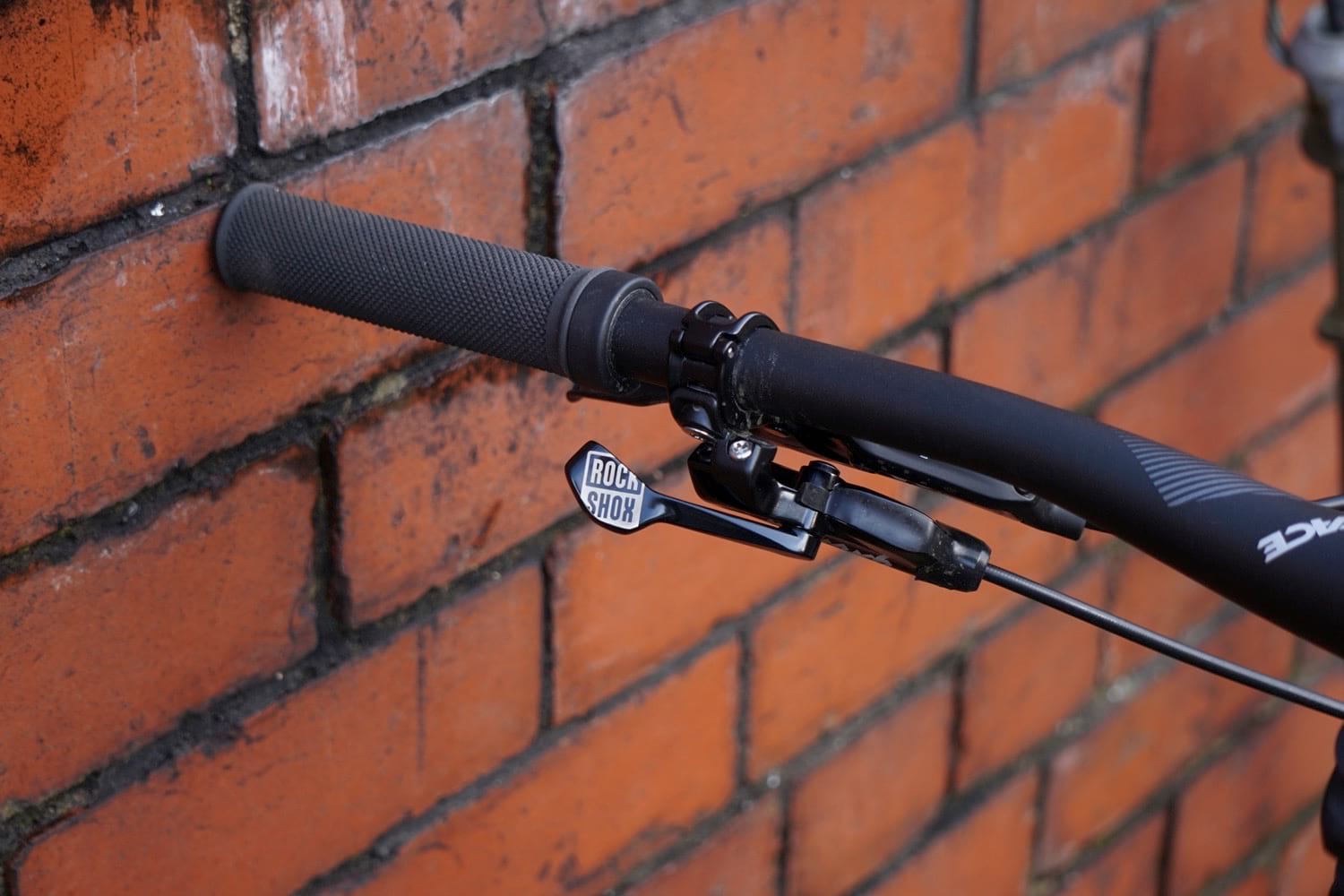

The seatpost on our medium bike is a 150mm travel RockShox Reverb Stealth dropper. Smaller sizes get 125mm travel posts. We’ve seen other new 2018 bikes arrive at the office with the old style Reverb remote, so it’s nice to see Canyon has gone that extra mile with the newer Reverb 1x remote instead.
The SRAM party continues with a SRAM GX Eagle 12 speed drivetrain, which includes a Truvativ Descendant 6K Eagle chainset with a 32t X-Sync 2 chainring.

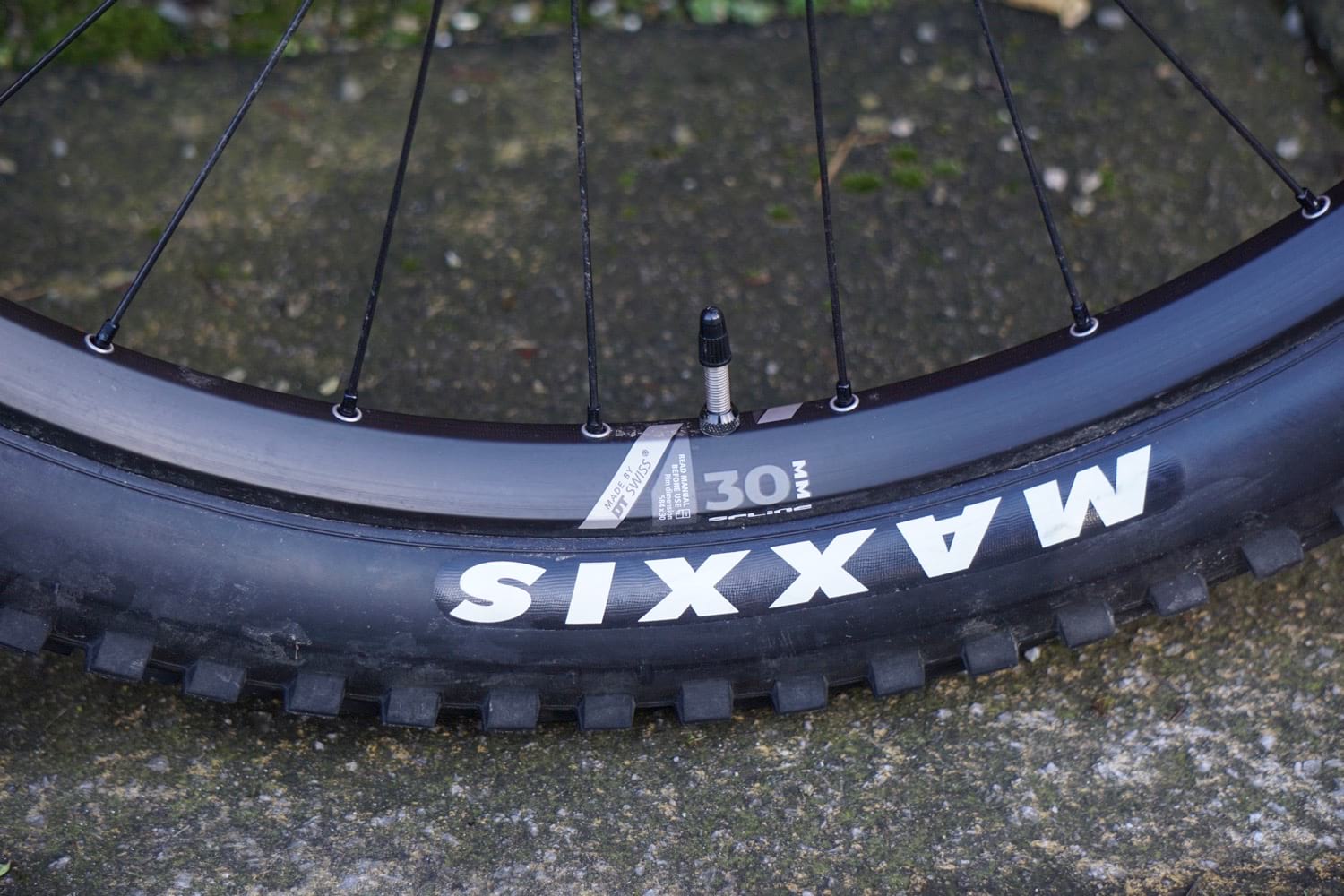
SRAM Guide R brakes also come on the bike out of the box. Personally, while I do like the lever shape and length on the Guides, I much prefer the on/off feel of a Shimano brake and find the bite point on SRAM brakes is too near the bars, but that’s just my preference.
The last piece of the puzzle are those 2.6in Maxxis tyres. The front is a DHF, while the rear is the Rekon+. I’ve had plenty of dealings with the DHF and while it might not be my tyre of choice for our currently wet and boggy conditions, I at least had an idea how it would handle. The Rekon+ though was a bit of an unknown, and from looks alone it doesn’t look like it was ever intended for UK mud…
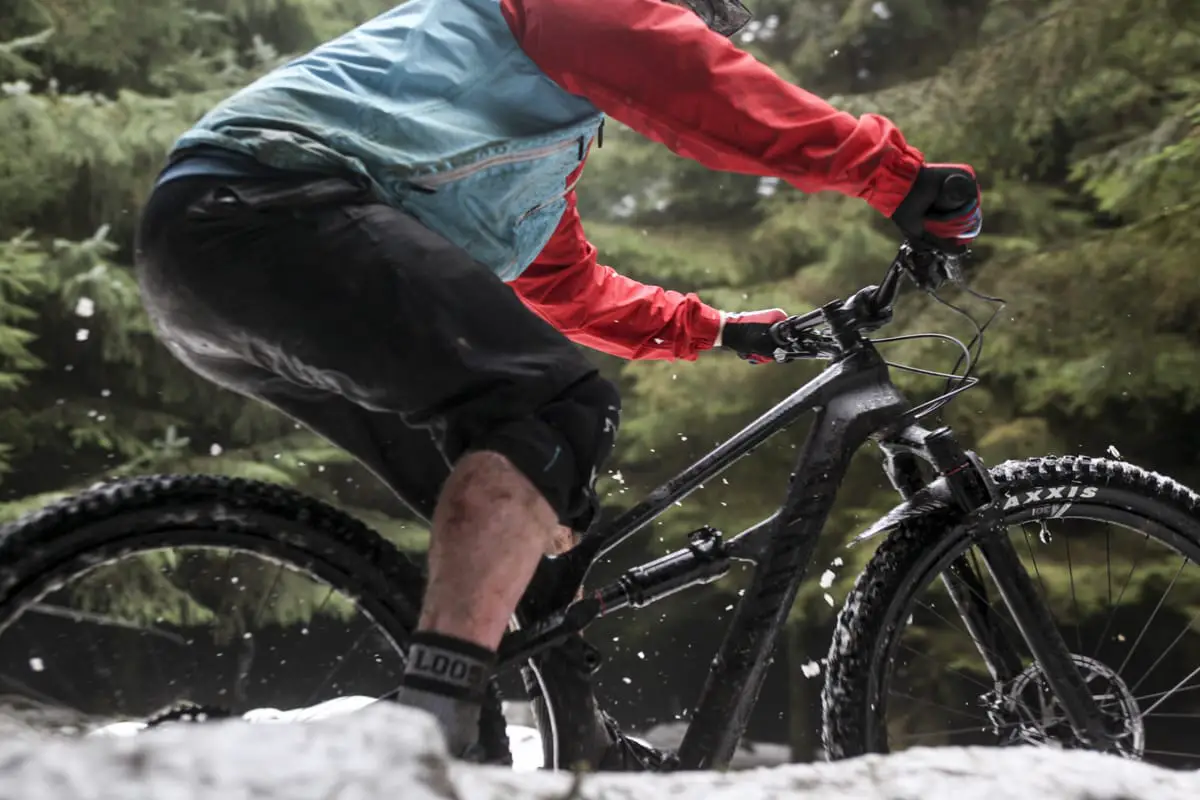
The Ride
At 178cm tall I’m right at the upper limit of a size medium frame, and if I had been given the choice I would have probably opted for a large. That said, with a reach of 440mm it’s only 9mm shorter than the Whyte T-130 that I was riding last year and that felt fine.
Being that bit shorter means that the Spectral is extremely easy to manual and wheelie. That’s pretty extraordinary as I can’t do either. I suppose a combination of the short back end, overall weight, and slightly wider tyres helps, but then again I could have been able to wheelie all along and simply forgot how to until I straddled the Canyon.
From my first initial spin around the car park outside Singletrack Towers, I could feel the eagerness of the Spectral. It’s a bike that accelerates quickly, maintains momentum and eggs you on.

Car park tests might be where every bike gets its first appraisal but it’s when you hit the trail that you actually have a real idea how it might ride. Like many of you, my rides tend to start with a climb so let’s talk about this first.
It’s no secret that I do not like to ride uphill. Yes, I understand that it is necessary and I’ll do my fair share of winching to get to a sweet piece of trail, but this doesn’t mean I’ll be giggling and cracking jokes while busting a lung. So when I actually started to have conversations with other riders while riding uphill, people took notice. I actually smiled uphill. I even sprinted uphill. I wasn’t the last uphill!
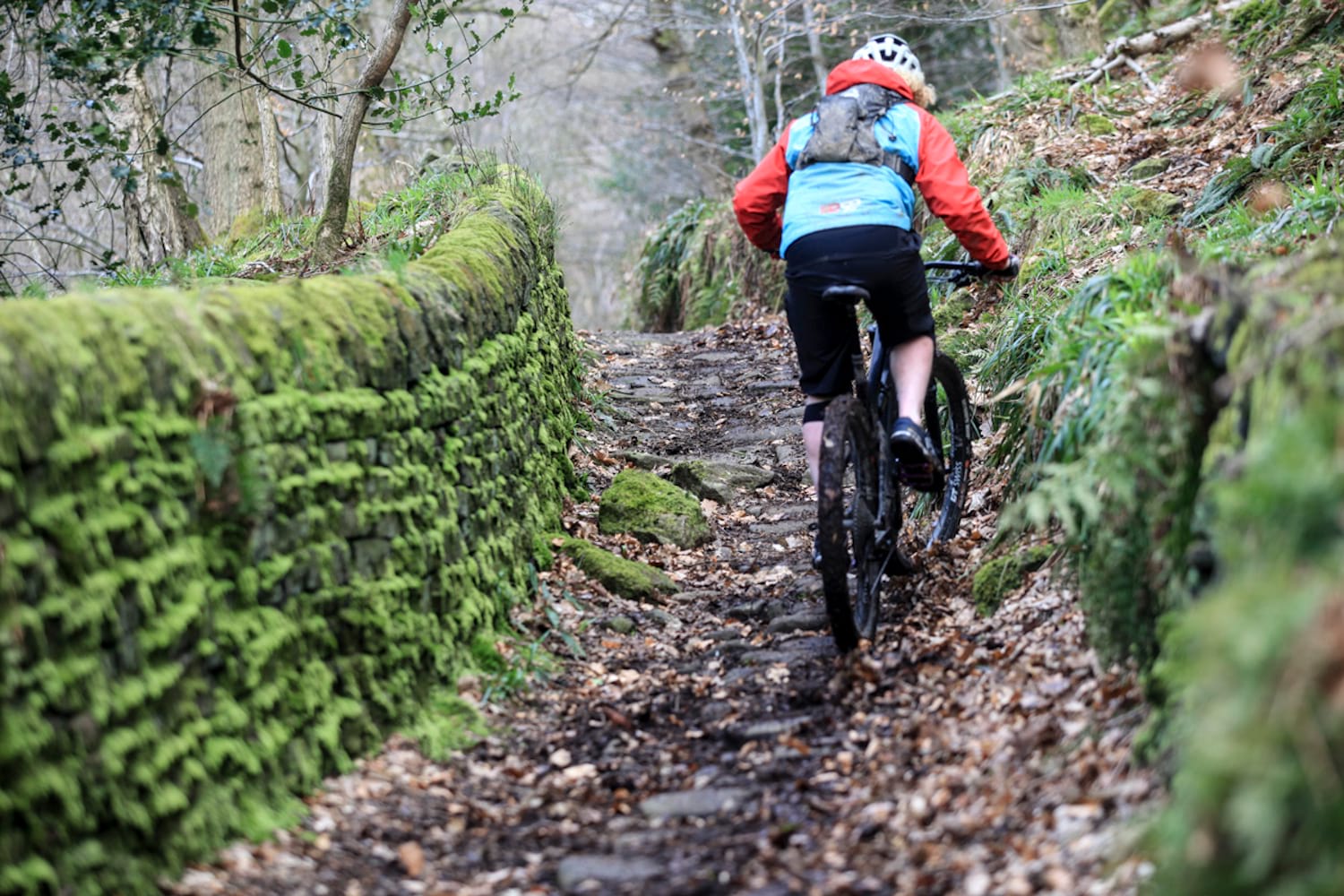
The geometry gets you into a great position for getting the most out of the rear tyre while not setting you so far back that the front wheel wanders. For some of my time with the Spectral I swapped out the 150mm fork for a slightly longer 160mm model, and even with taller ride height, the bike continued to climb just as well.
It’s a combination of factors as to why the Spectral climbs so well. It has a low weight, excellent suspension, a huge 500% Eagle gear ratio, great geometry and wide tyres that actually roll very well – especially that Rekkon+ on the rear. Speaking of which, this is still not the tyre I would opt to use for winter/spring riding, but if you keep seated and choose your gear wisely it is possible to find enough traction to climb some stupendously steep stuff. Though changing the rear tyre to something bitier and more suited to gloopy conditions would make climbing much faster and more efficient.
While I’m talking about the rear tyre, I will also mention that this was the only component that let me down during my time on the bike. An extremely rocky descent ripped a knob off and resulted in a long walk back to the car. Dang.

Being used to Shimano 11-speed setups, the Spectral also gave me my first real amount of time on a SRAM Eagle groupset. The first few muddy rides were quite a bit noisier than I’m used to, with mud and grit covering the narrow chain in filth. But even in the muddiest of conditions, the shifting was still faultless, if not super quiet.
As the Spectral is significantly lighter than my own bike I felt a lot fresher after long climbs and big all-day rides out in the Peaks, which meant I had a whole lot of energy left to burn on the undulations and descents. This worked out just fine as it meant I was able to make the most out of the efficient suspension and playful nature of the Spectral, and really let rip when I needed to get moving.
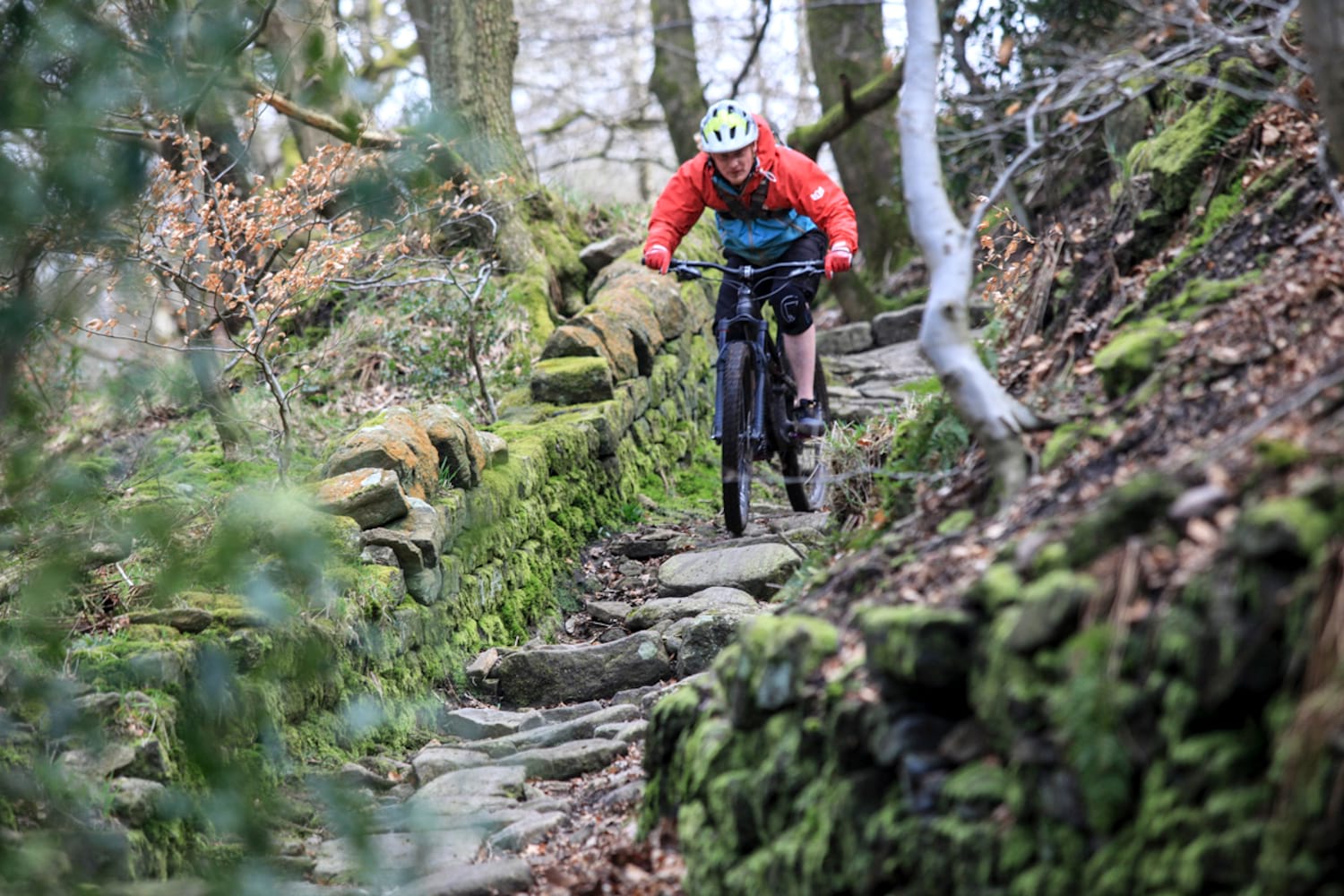
The fast rolling bike gains momentum very rapidly, only slowing down if you grab on the SRAM Guide anchors. With 150mm of travel up front and 140mm on the rear there’s enough travel to iron out the really rocky, rooty terrain without numbing the experience, and thanks to the supportive mid-stroke, you have something to push against through corners and pump along the trail.
As I pushed the Spectral down rowdier and more technical descents, it just doesn’t seem to be fazed. Steep terrain, large drops and fast rocky sections are handled comfortably, but not in the sense that everything is entirely gobbled up. Instead, the Spectral skips from rock to root, jump to drop, and all the while accelerating.
Did I mention that this bike is fast? ‘Cos it’s fast – with a capital “F”.

Three Things That Could Be Improved
- Our bike was a preproduction model and didn’t come with any protection for heel rub on the seat and chain stays. This was sent to us during the review but the rubbing had already made its mark. Bikes that you can buy now will have that protection already in place.
- While the frame does have a ton of standover the seat tube is very long. As mentioned above I would have probably chosen a Large if I could, but I think I’d run into issues with getting the saddle low enough.
- The rear tyre isn’t very tough and I managed to rip a few holes in it on my local rocky Peak District rides. On top of this, a little extra rear end traction would be worthwhile for UK winter riding.
Three Things That We Loved
- I kept having to remind myself that this is a £2699.99 bike because it is so damn light!
- I hate climbing but not on this bike – the lightweight Spectral is a joy to ride uphill.
- This bike is fast! It’s fast uphill, downhill and everywhere else you choose to take it. The bike keeps on rolling and never seems to lose momentum.
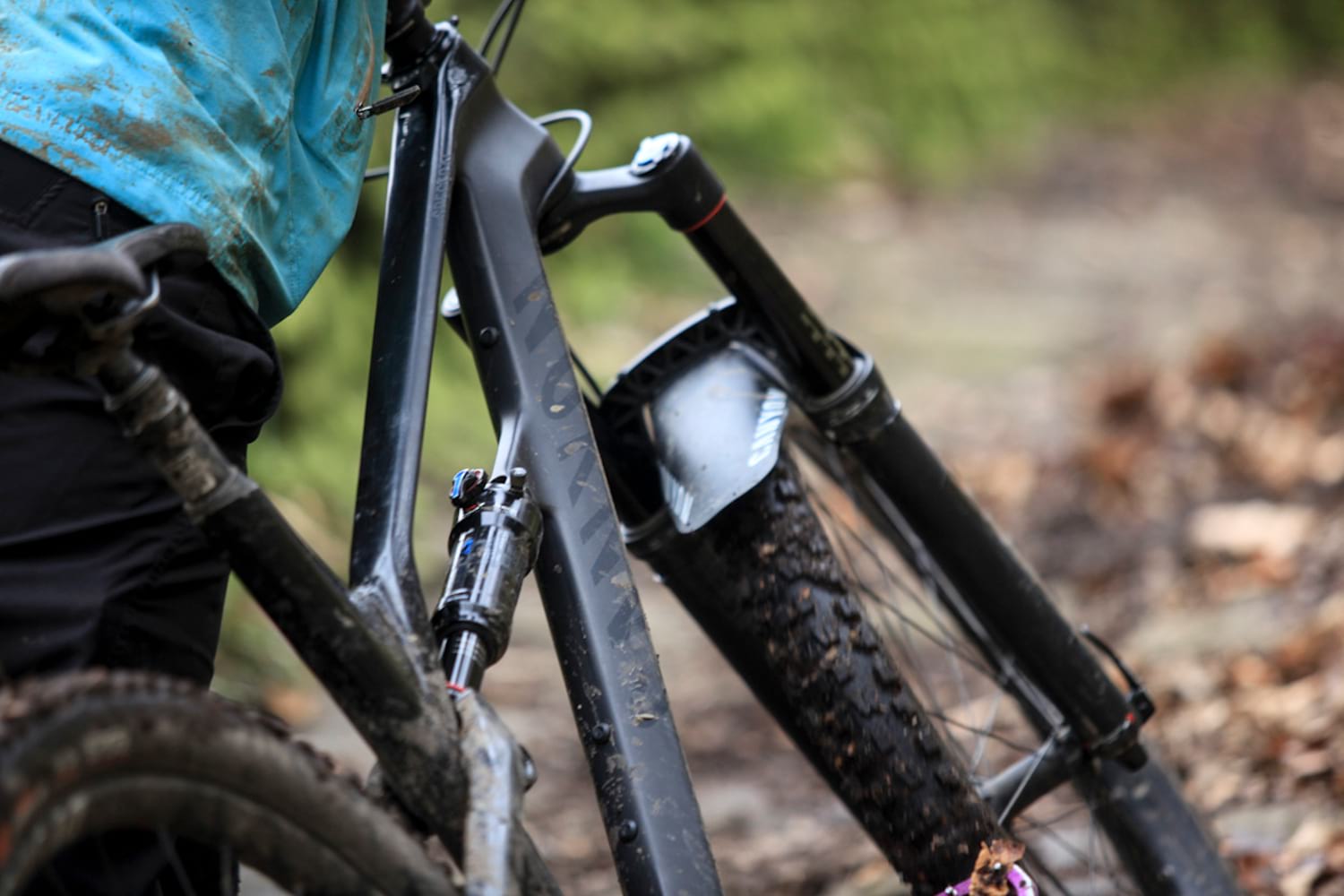
Overall
In Canyon’s marketing literature, it says that the new Spectral was designed to be playful while offering stability and speed. And I’d say they’ve managed that. On top of those qualities, Canyon has created a bike that can make even the most average of climber feel like a World Cup XC racer, and those of us who want to “love back wheel” but can’t, feel a little more like the Dudes Of Hazzard.
This is a bike that will suit anyone in the UK regardless of where you ride (trail centers and natural trails alike) and will give you just enough travel and maneuverability to keep you out of danger while keeping a manic grin plastered across your face, as you hit warp 8.

2018 Canyon Spectral CF 8.0 Specs
- Frame // Full Carbon Fibre Mainframe, 6066 Alloy Rear Triangle, 140mm Travel
- Fork // RockShox Pike RCT3, 150mm Travel
- Shock // RockShox Deluxe RT
- Wheelset // DT Swiss M1700 Spline, 30mm Wide Rims, Boost Hubs
- Tyres // Maxxis Minion DHF 2.6in Front & Rekon+ 2.6in Rear
- Chainset // Truvativ Descendant 6K Eagle w/32t X-Sync 2 Chainring
- Rear Mech // SRAM GX Eagle, 12-Speed
- Shifters // SRAM GX Eagle, 12-Speed
- Cassette // SRAM XG-1275 Eagle, 12-Speed
- Brakes // SRAM Guide R, 200mm Front & 180mm Rear Rotors
- Stem // Race Face Aeffect R 35, 50mm Long
- Bars // Race Face Aeffect 35, 760mm Wide
- Grips // Canyon Bracelets Lock-On
- Seatpost // RockShox Reverb Stealth, 30.9mm Diameter, 150mm Travel
- Saddle // SDG Fly Mtn
- Size Tested // Medium
- Sizes Available // Small, Medium, Large, X-Large
- Weight // 13.3kg (29.32lbs)




